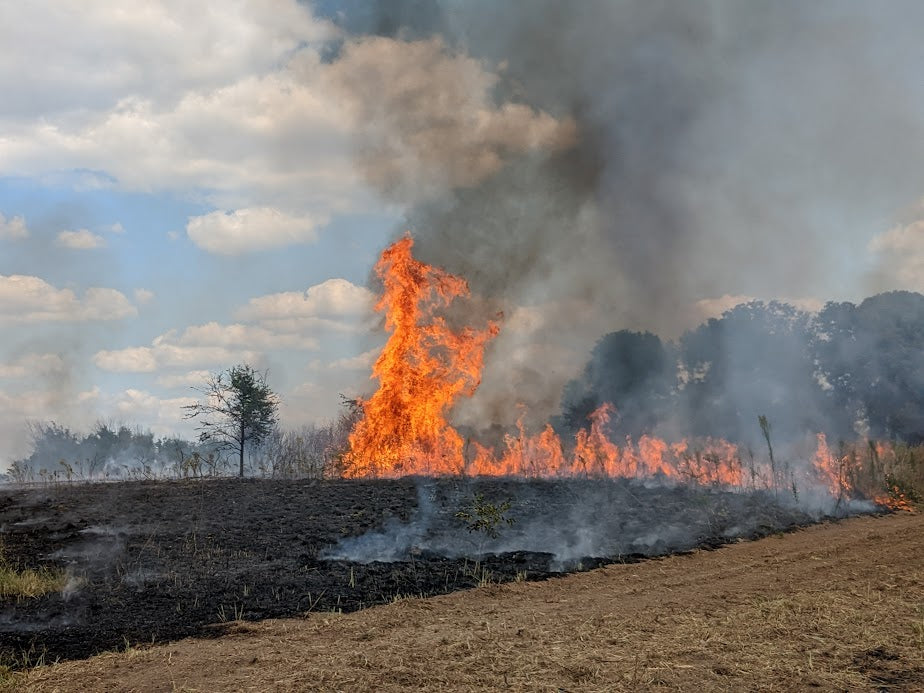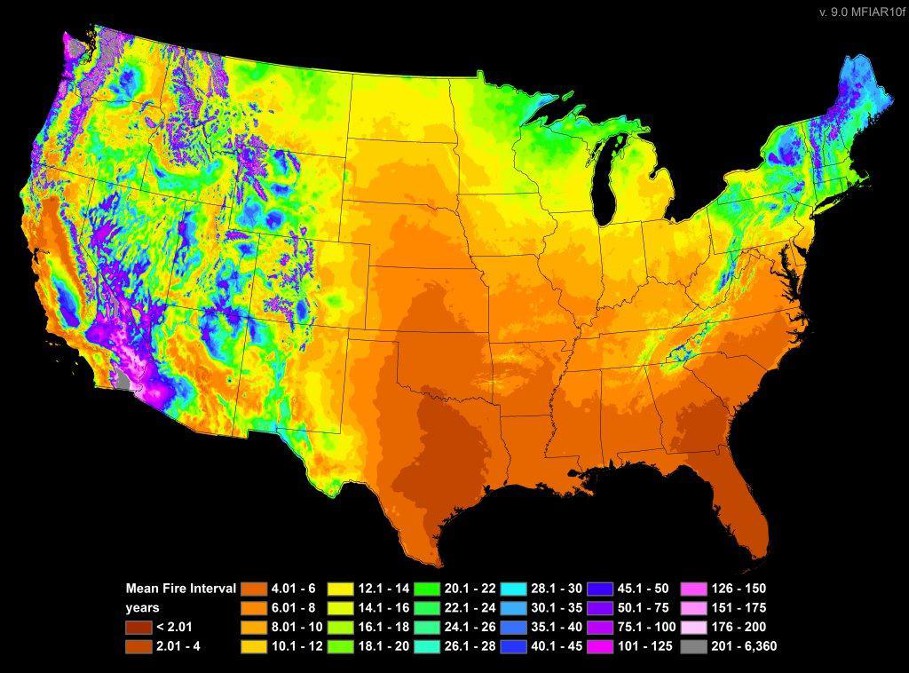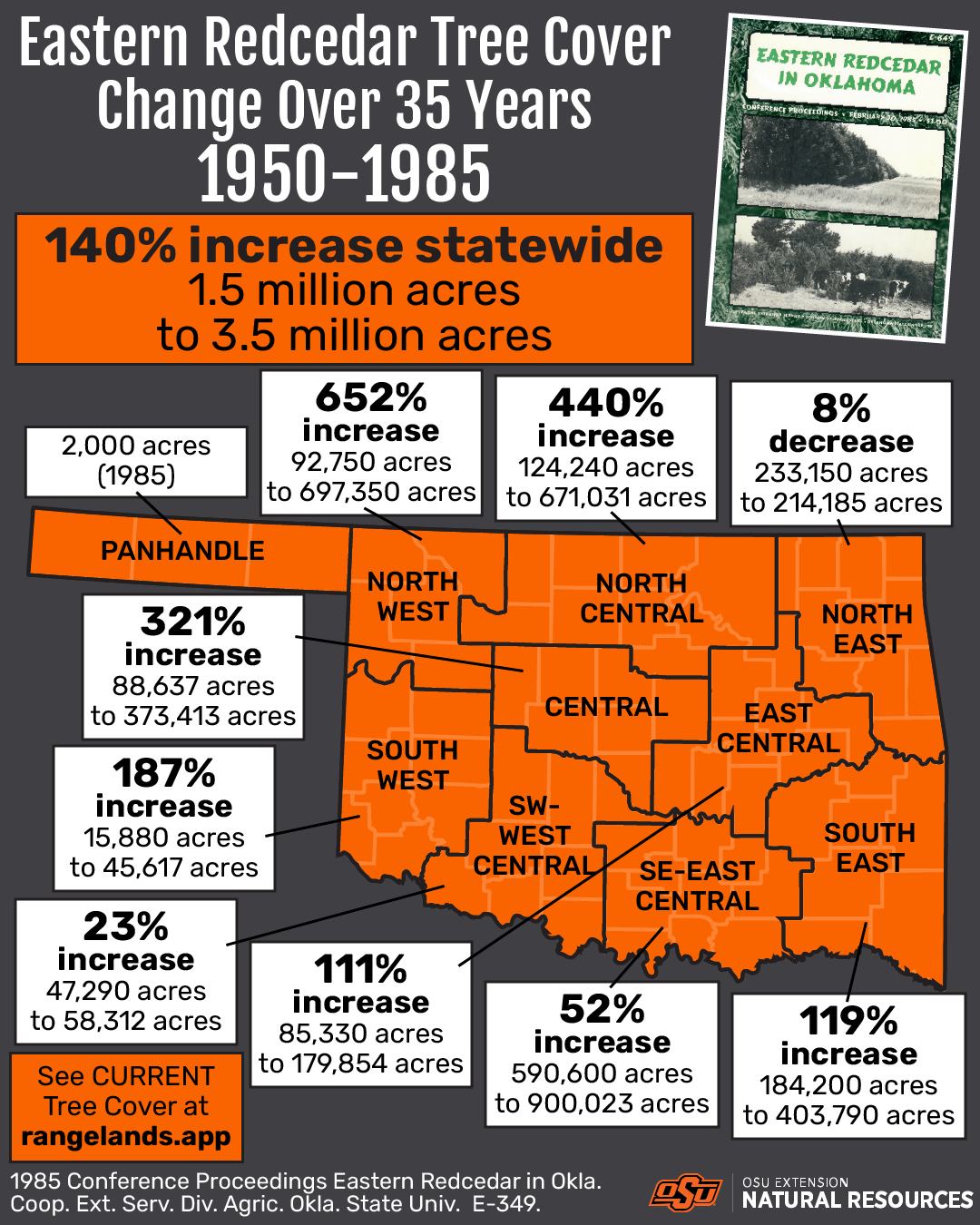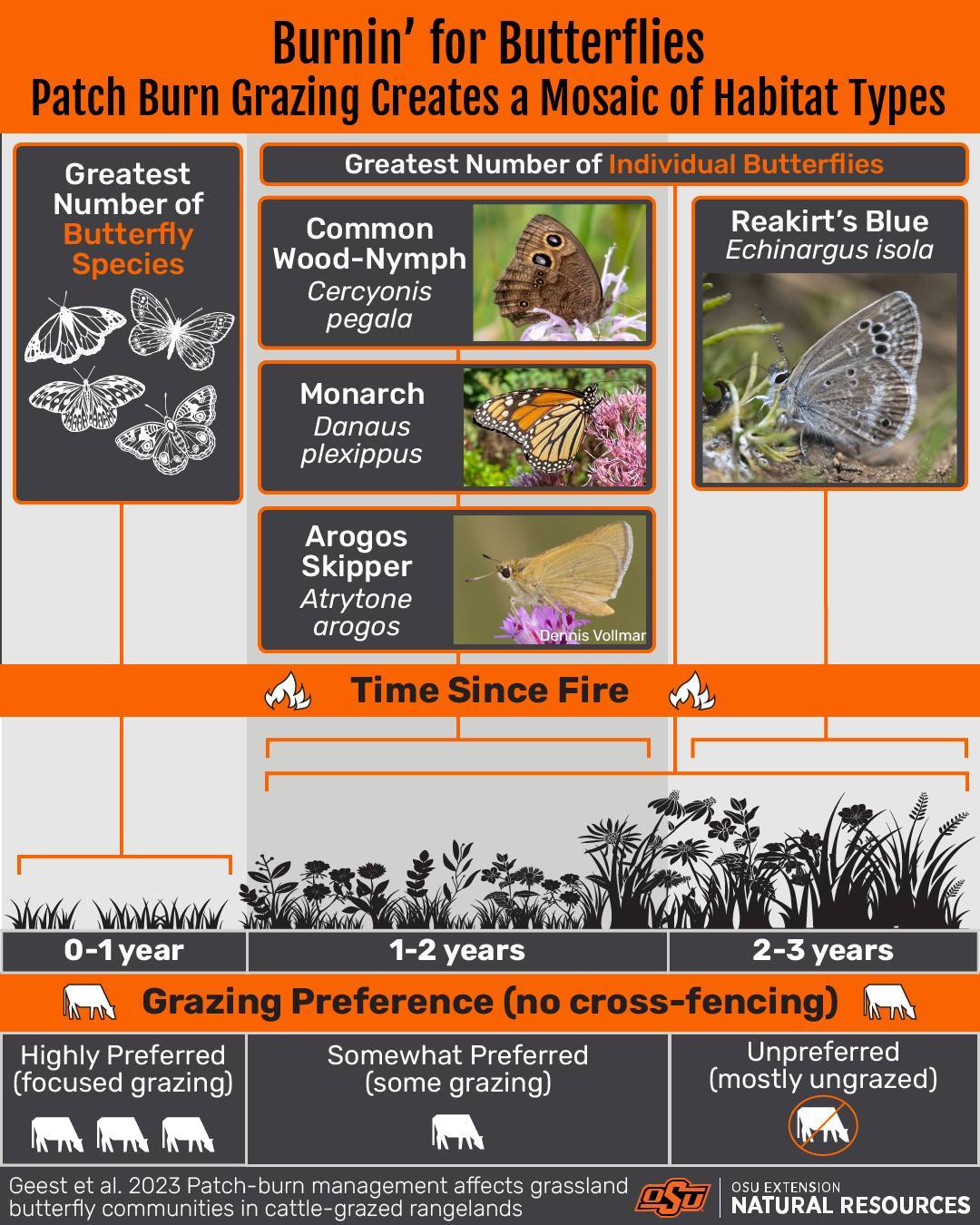

Fire
Fire has long been a natural and necessary force in Oklahoma’s ecosystems, shaping the land and maintaining the balance between grasslands and forests. Historically, fires occurred roughly every four to six years, a cycle driven by a combination of lightning strikes and intentional burning by Indigenous peoples, who used fire to improve hunting conditions, encourage new plant growth, and prevent forests from overtaking the prairies. This regular fire regime was essential in maintaining Oklahoma’s vast grasslands by recycling nutrients, clearing dead plant material, and preventing the unchecked spread of trees and shrubs. However, as housing developments, roads, and farmland have fragmented the landscape, fire has been suppressed, disrupting this natural process and allowing woody encroachment to take hold.

Estimates of historical fire intervals using the physical chemistry of climate. Much of Oklahoma experienced fire every 4 to 6 years before year 1850.

One of the biggest consequences of fire suppression is the aggressive spread of eastern redcedar (Juniperus virginiana). While native to Oklahoma, this tree was historically kept in check by frequent fire. However, during the Dust Bowl, eastern redcedar was widely planted as a windbreak to prevent soil erosion—a well-intended effort that, over time, contributed to its unchecked spread. Without fire to limit its growth, redcedars have spread rapidly, taking over prairies and grasslands at an alarming rate. They crowd out native grasses and wildflowers, reducing biodiversity and creating dense monocultures where few species can thrive. Even worse, eastern redcedars are highly flammable, containing volatile oils that cause them to burn intensely once ignited. Their rapid expansion has significantly increased the risk of wildfires, making them a major concern for landowners and fire management professionals.

Beyond redcedar control, fire is essential for many native plant species that rely on it for survival. Some species have evolved to require fire to trigger seed germination. For example, certain wildflower seeds benefit from the heat of fire to break down their seed coats, allowing them to sprout. Others rely on fire to clear out competing vegetation, creating the open conditions they need to grow and reproduce. Without periodic burns, these species struggle to establish, leading to a decline in the native plant communities that pollinators and wildlife depend on.
Recognizing the need for fire, many Oklahoma ranchers and landowners have begun using prescribed burns as a tool to manage their land. Prescribed fire is the intentional and carefully managed application of fire to restore prairie ecosystems, reduce fuel loads, and improve grazing conditions for livestock. Fire clears out invasive species, stimulates fresh plant growth, and improves soil health, making it an invaluable land management tool.
Organizations like the Oklahoma Prescribed Burn Association (OK-PBA) have been instrumental in helping landowners safely reintroduce fire to the landscape. OK-PBA provides training, resources, and equipment to assist ranchers, farmers, and conservationists in conducting prescribed burns. By working together, landowners can bring fire back to the land, restoring native ecosystems, reducing wildfire risk, and ensuring that Oklahoma’s prairies remain healthy, diverse, and resilient for generations to come.
